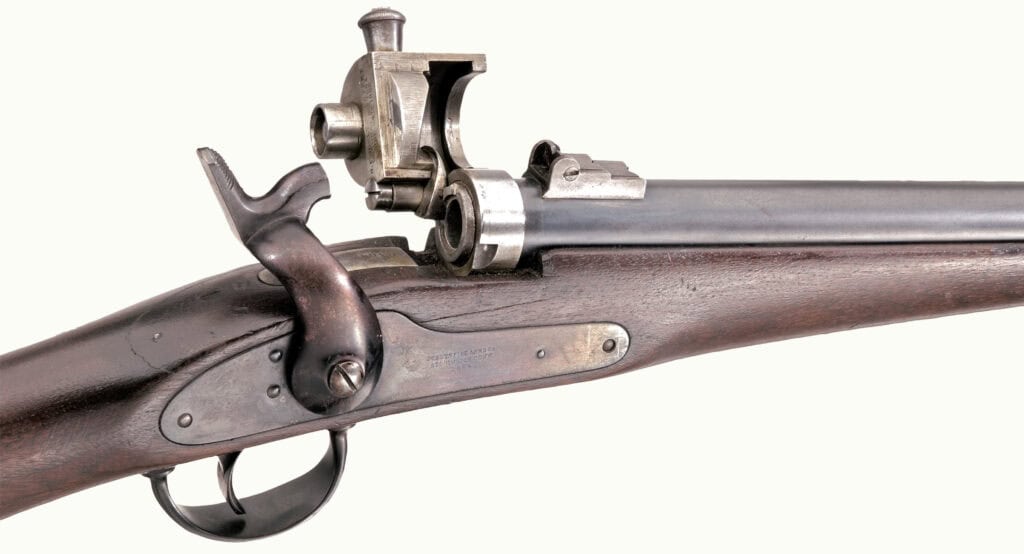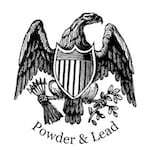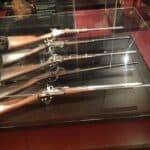
Introduction
Among the many innovations in small arms that emerged during the American Civil War, the Joslyn Carbine stands out as a pioneering step toward the modern metallic cartridge firearm. A product of American ingenuity and industrial capability, the Joslyn was one of the first successful breechloading carbines designed to fire a metallic cartridge, placing it at the forefront of a firearms revolution. Though not as prolific as the Sharps or as iconic as the Spencer, the Joslyn Carbine made a significant mark on Civil War armament history and deserves its place among the transformative weapons of the era.
This article offers the most complete and authoritative examination of the Joslyn Carbine available online, detailing its development, mechanical design, manufacturing history, cartridge evolution, field service, comparative performance, and legacy. Whether you're a historian, collector, reenactor, or shooter, this account provides unparalleled insight into a weapon that helped bridge the gap between the muzzleloading era and modern firearms technology.
Origins of the Joslyn Carbine
The Joslyn Carbine was the brainchild of Benjamin Franklin Joslyn, a firearms inventor and machinist from Worcester, Massachusetts. Joslyn's earliest breechloading firearm patents date to 1855, but his breakthrough came in 1861 when he introduced a revised breechloading mechanism better suited for mass production and improved battlefield reliability.
U.S. Patent No. 33,160, issued on September 17, 1861, laid the foundation for the Joslyn Carbine’s military iteration. This design incorporated a rotating breechblock system that swung outward to allow rear loading of a self-contained brass cartridge. This was a major departure from previous percussion-based breechloaders, which still relied on loose powder and caps.
The timing of Joslyn’s improved carbine coincided with the outbreak of the Civil War—a period when the Union Army was desperate for breechloading firearms, especially for cavalry units. Joslyn’s design attracted immediate interest from the Ordnance Department, which was seeking rapid rearmament with more efficient and reloadable weapons for mounted troops.
Joslyn Firearms Company and Manufacturing
To manufacture the Joslyn Carbine, Benjamin Joslyn partnered with financier William C. Palmer, and together they established the Joslyn Firearms Company in Stonington, Connecticut. Later production would shift to Springfield, Massachusetts.
Though Joslyn received the patent, it was Palmer who secured the critical government contracts. Palmer’s political connections and business acumen enabled large-scale orders from the War Department. Between 1862 and 1865, more than 16,500 Joslyn Carbines were delivered to the U.S. government in two primary models:
- Joslyn Model 1862
- Joslyn Model 1864
Both versions featured the same basic design concept but with mechanical and ergonomic improvements introduced in the later model.
Design and Technical Features

Breech Mechanism
The Joslyn employed a rotating breechblock hinged at the front. To load the carbine, the user lifted a side-mounted latch and rotated the breechblock upward and to the right, exposing the chamber. A brass cartridge was then inserted, and the breech closed manually.
This system was simpler and more robust than some earlier breechloaders, offering faster reload times and greater battlefield reliability. Unlike paper-cartridge systems like the Sharps, the Joslyn took advantage of metallic cartridge technology—specifically rimfire cartridges—which required less cleaning and enabled safer, more weather-resistant operation.
Barrel and Action
The Joslyn typically had a 22-inch barrel and was chambered in .54 caliber in the earliest versions, later transitioning to the .56-52 Spencer-compatible cartridge. The barrel was secured to the stock with a single barrel band, and the weapon featured a sling bar and ring on the left side for cavalry use.
The action was robust enough to handle the pressures of metallic cartridges, a notable achievement in an era when many breechloaders had to be retrofitted from older percussion platforms.
Sights and Furniture
Sights consisted of a fixed front blade and a rear flip-up leaf graduated for different ranges. The stock was typically made from oil-finished walnut, and a steel buttplate completed the build. Total weight hovered around 7.5 pounds, making it manageable for mounted use.
Ammunition: The Joslyn Cartridge
One of the Joslyn’s defining innovations was its use of the metallic cartridge. Initially chambered for a .54 caliber rimfire brass cartridge designed specifically for the Model 1862, later versions—especially the Model 1864—transitioned to the .56-52 Spencer rimfire cartridge to standardize logistics.
These cartridges consisted of a solid drawn brass case with a heel-based bullet and black powder charge. Ignition came via a rimfire primer, meaning the firing pin struck the cartridge’s rim, not its center. While rimfire cartridges would eventually be outmoded by centerfire designs, at the time they represented a dramatic leap forward in simplicity and speed of operation.
Performance was on par with other cavalry carbines of the period. Muzzle velocity ranged between 950 and 1,050 feet per second, with effective range estimated at 300 yards, though accuracy declined significantly beyond 150 yards due to the rainbow-like trajectory and limitations of the rudimentary sights.
Model 1862 vs. Model 1864: Key Differences
| Feature | Model 1862 | Model 1864 |
|---|---|---|
| Cartridge | Proprietary .54 rimfire | .56-52 Spencer rimfire |
| Breechblock | Early, somewhat fragile design | Improved and more durable |
| Lock Mechanism | External hammer | Similar but refined geometry |
| Production Quantity | ~8,000 | ~8,500 |
| Performance | Reliable, but ammunition was unique | Greater logistical efficiency |
The Model 1864’s compatibility with Spencer ammunition made it far more practical in the Union’s supply chain, and it was generally better received in the field.
Military Use and Field Experience
Joslyn Carbines were issued primarily to Union cavalry regiments, including:
- 4th and 8th Indiana Cavalry
- 9th and 13th Tennessee Cavalry
- 1st Nebraska Cavalry
- 1st D.C. Cavalry
Troops praised the Joslyn for its ease of loading and fast rate of fire. Unlike muzzleloaders, which required dismounting and extensive manual loading, a soldier could fire a shot, swing open the breech, insert a fresh round, and be ready again in seconds—critical in fast-moving cavalry skirmishes.
Reports from the field noted occasional extraction issues due to cartridge swelling or fouling, but the carbine was generally considered robust and dependable. The improved Model 1864 largely resolved earlier complaints.
Comparison to Contemporaries
| Feature | Joslyn Carbine | Sharps Carbine | Spencer Carbine |
|---|---|---|---|
| Loading | Breech, metallic cartridge | Breech, paper cartridge | Repeating, metallic cartridge |
| Action Type | Swinging breechblock | Falling block | Lever-action repeater |
| Rate of Fire | 8–10 rounds per minute | 8–10 rounds per minute | 14–20 rounds per minute |
| Ammunition Type | Rimfire metallic | Paper | Rimfire metallic |
| Cavalry Suitability | High | High | Very High |
While the Spencer Carbine ultimately overshadowed the Joslyn in terms of firepower and innovation, the Joslyn still marked an important step in standardizing brass-cartridge breechloaders for military use.
Postwar Use and Legacy
After the Civil War, many Joslyn Carbines remained in government inventories. Some were refurbished for continued use in the Indian Wars during the late 1860s, though they were quickly supplanted by newer centerfire rifles like the Springfield Trapdoor.
Surplus Joslyns were sold on the civilian market, where they became popular among frontier settlers, militias, and collectors. Today, they are sought-after artifacts for collectors and reenactors, appreciated for their historical significance and mechanical uniqueness.
Collectibility and Modern Relevance
Original Joslyn Carbines in good condition command respectable prices on the collector’s market. Factors influencing value include:
- Model type (1862 vs. 1864)
- Manufacturer markings and cartouches
- Bore condition and mechanical function
- Matching serial numbers and original finish
Reproduction ammunition can be hand-loaded for those wishing to shoot original examples, though proper knowledge of rimfire conversion or careful black powder loading is required.
Conclusion: The Forgotten Forerunner
The Joslyn Carbine occupies a unique and often underappreciated place in the evolution of American military arms. As one of the first widely-issued breechloaders to fire a metallic cartridge, it bridged the gap between the percussion era and the age of modern repeaters. While it may lack the name recognition of the Spencer or the romantic legacy of the Sharps, the Joslyn was a practical, innovative, and important weapon of its time.
Benjamin Joslyn’s contributions helped lay the groundwork for the postwar cartridge revolution that would define late 19th-century firearms development. For historians, collectors, and shooters alike, the Joslyn Carbine remains a fascinating testament to the ingenuity that reshaped warfare in the crucible of the American Civil War.



If you know of any forums or sites that should be referenced on this listing, please let us know here.




